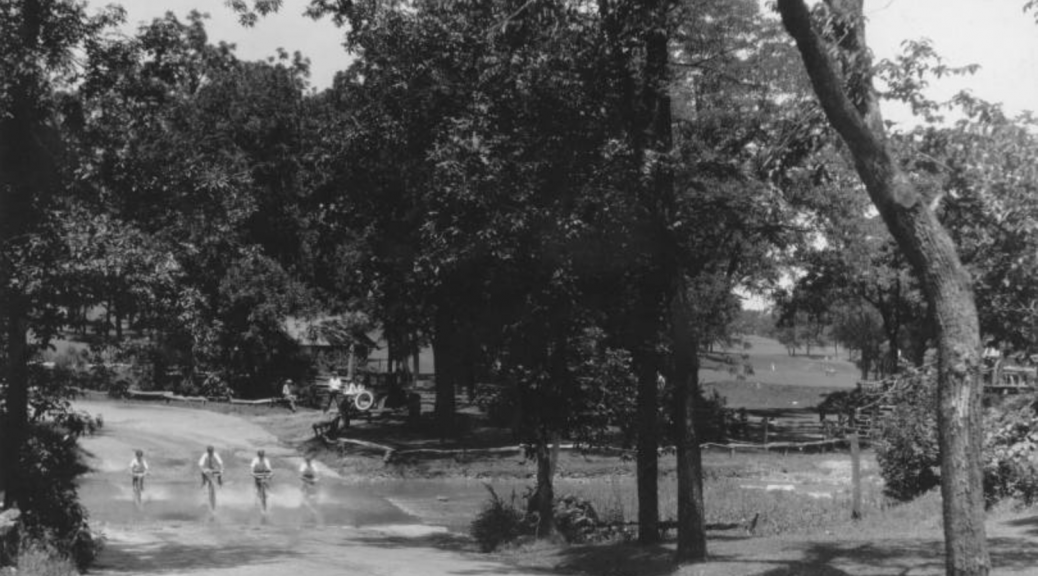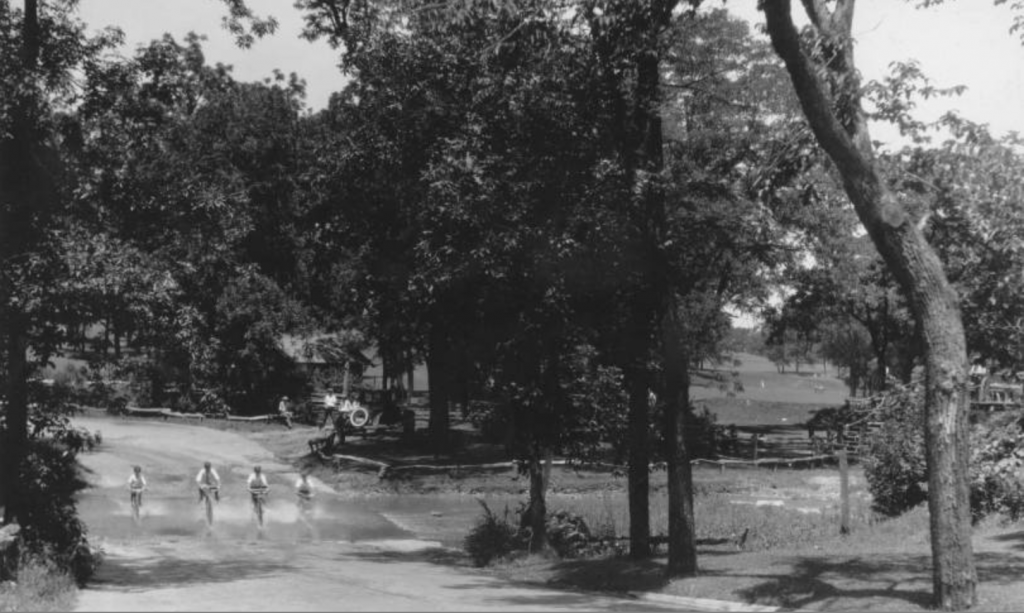
1922. A view of the ford just below 63rd Street, looking south. The rustic bridge leads down to the road from the club house, known then as the “The Lodge” and located about where the home of Dr. and Mrs. Thomas G. Orr now stands.
The Landing on 63rd and Troost was a marvel of its time. It was a product of desire and want in a time of major sprawl. This was the heyday of horse racing, high-class sports, and a time of prosperity. People could afford to go out and spend money, women, in general, did not have jobs and could spend time during the week visiting shops and enjoying leisurely activities. But how did it affect the surrounding area and how has the late 20th and early 21st-century lifestyle changed the way this area has changed?
After World War 2 ended, a slew of men came home and a proliferation of whole new generation proceeded. The Baby Boomers. An astronomical number of homes needed to be built and they all had a certain western requirement; windy roads and large plots of land.
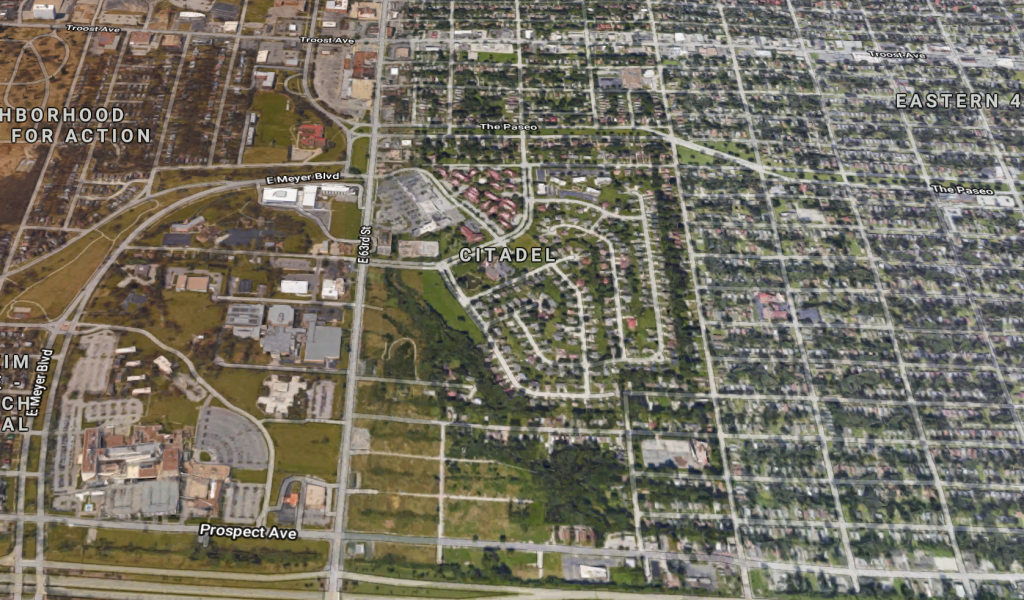
Before Citadel was created for the purpose of satisfying the housing shortage, it was a golf course (not unlike the first image, which was on 63rd a few neighborhoods down). You can tell exactly where it was because of the stark contrast of street types, from a ridged grid to a windy post-WW2 sprawl type road.
The oldest building in the small context of between Brooklyn and Meyer is one dating from the 50’s, that being the Nazarene Theology School to the south. From there, the majority of the development was done in the 80’s, around 10 years after the completion of the Landing for context.
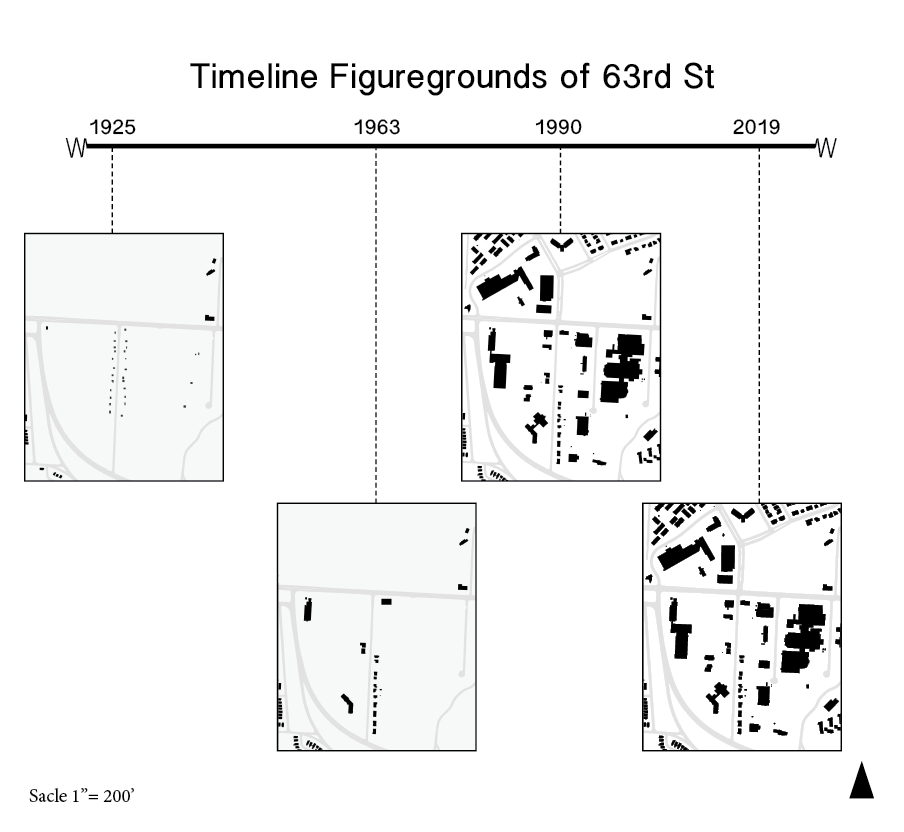
There was an extremely large bolstering of development, as we can see from the figure grounds above, from 1963 to 1990. Then after that, there is a stall in development that is consistent with census household data. There was not much development from before the ’80s and therefore after.
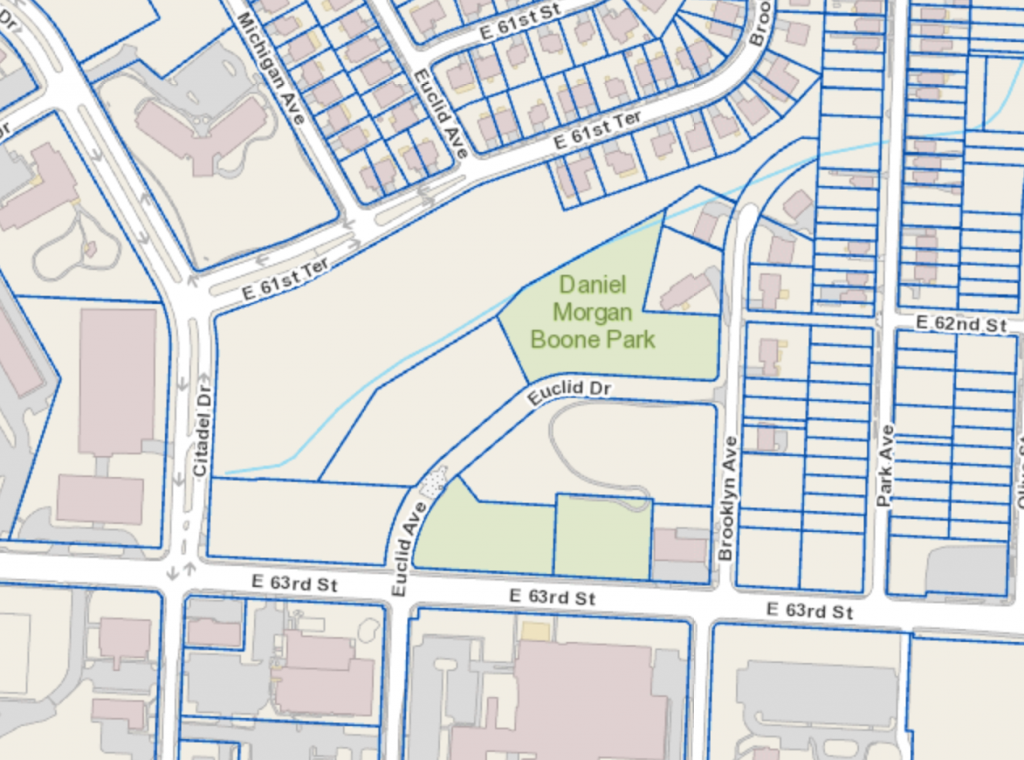
The major travesty is that what was once a large expanse of open land, granted it was short grass and few trees, has been broken up and now the only remanence of the once huge plot of nature is now a small section (shown in green in the above picture). Which reminds me of one of my favorite quotes from James Kunstler, “In the context of contemporary culture…”green space” or “open space” essentially means build nothing. It is a rhetorical device for putting city land in cold storage in the only acceptable form, that is, covered by grass and shrubs, aka nature.”
